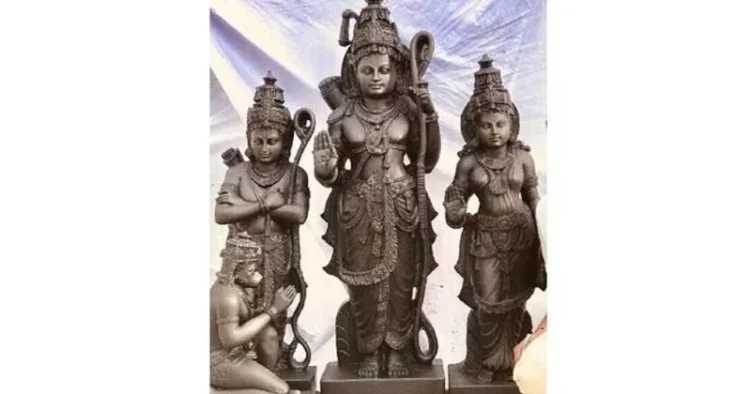In the realm of Hindu Dharma, the Pran Prathistha of murtis of Hindu bhagwan holds paramount significance, and the upcoming consecration of the Ram Lalla’s murti on January 22 accentuates the ritual’s importance. Pran Pratistha, a ritual integral to the installation of murtis in temples, is considered the pivotal moment when the life force is instilled in the deity, rendering the murti worthy of worship.
Understanding Pran Pratistha: Infusing life in Murtis of Bhagwan
The term “Pran Pratistha” is derived from Sanskrit, where ‘Pran’ signifies life force, and ‘Pratishtha’ implies establishment. In essence, Pran Pratistha involves the process of bringing the murti to life, transforming it into a living representation of the deity. Without this ritual, no murti is deemed suitable for worship in Hindu Dharma.
The consecration ritual involves a meticulous process. Initially, the murti undergoes a ceremonial bath with holy water from rivers like the Ganga, symbolising purity. The murti is then adorned with new clothing and placed in a pristine space, where it is embellished with sandalwood paste. The consecration itself transpires through the chanting of Beej Mantras, an invocation that infuses the murti with divine life force.
Significance of Pran Pratistha
Pran Pratistha is considered the essential prerequisite for murti worship. It is believed that after this consecration, the deity itself takes residence in the murti. The ritual serves as a conduit between the worshipper and the divine, establishing a direct connection. However, adherence to an auspicious time is imperative for the ritual to yield propitious results.
The ritual involves the participation of priests who touch different parts of the murti, signifying the presence of various deities in different sense organs. The opening of the divine eyes with scented water and flowers culminates the consecration process. Subsequently, Aarti is performed, and Prasad is distributed among devotees, marking the completion of the sacred ceremony.
The consecration is not a one-time event; it is believed to endure eternally. However, consistent daily worship is deemed necessary to maintain the divine connection established during the Pran Pratistha.
Maintenance of deity murtis: A devotee’s responsibility
Neglecting the murtis post-consecration is considered offensive in Hindu Dharma. Proper rituals and processes must be observed for the murtis to be maintained appropriately. The deities, if not attended to, are believed to express displeasure and may even invoke divine retribution. For instance, failing to adhere to rituals for murtis like Bhairav and Goddess Kali may incur their wrath.
Orientation of deity murtis: Facing eastward for positive energy
According to Hindu religious texts, the face of the murti in a temple or home should always be oriented towards the east. The east is believed to harbour positive energy, and murtis facing this direction are thought to receive divine blessings. The strategic placement of murtis is seen as a way to harness positive forces and align with the cosmic energies.
Ritual worship practices: A Daily affair
In adherence to Hindu traditions, deity murtis should be worshipped five times a day. The rituals commence during the Brahma Muhurta, a time before sunrise, and conclude just before sunset. This regular worship is seen as a means of sustaining the divine connection established during the Pran Pratistha.
As the consecration of the Ram Lalla murti approaches on January 22, the devotees are preparing to witness the culmination of this sacred ritual. Pran Pratistha, with its intricate processes and profound symbolism, underscores the depth of devotion in Hindu Dharma, emphasising the eternal connection between the worshipper and the divine.



















Comments